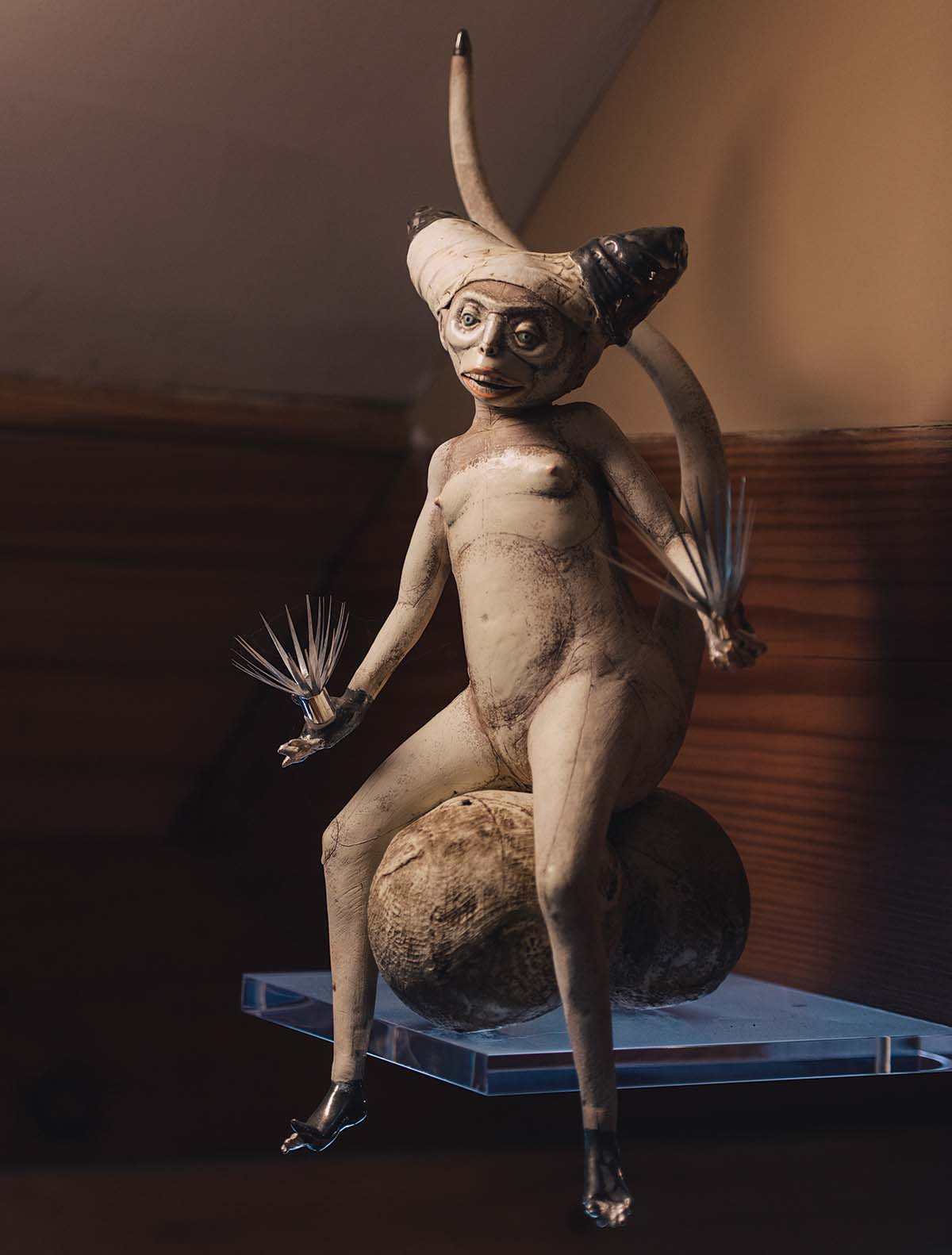
Glass art has a grip on passionate collectors Merrily Orsini and Rick Heath that’s anything but fragile. The Louisville transplants connected because of their shared love of the medium, which hasn’t waned since they met in the late ’90s.
The couple have scouted pieces on their world travels that are as varied as can be: delicate and hefty, representational and abstract, visually simple and thematically complex. They arrived in the Asheville area seven years ago to be near Merrily’s sons and grandchildren, and their relaxed Bent Creek home seems the ideal private gallery for their 200+-piece collection.

How did you fall into glass?
Merrily Orsini: I’ve owned a healthcare-marketing business for 40 years, and met Rick at a Louisville Rotary Club meeting after he was widowed. In 1997, we ended up attending separate conferences on the same weekend, in Palm Desert, California. It just so happened that a major Dale Chihuly exhibit was at the Palm Springs Desert Museum then. We both went, spent all day there, and exited complete “glass goners.”
Your first acquisition?
We attended a Kentucky Museum of Art auction and wound up purchasing a piece by world-renowned glass artist Stephen Rolfe Powell — together, since the price point wasn’t realistic for either of us alone.
Later that year, we visited collector friends in Seattle for my 50th birthday. We immersed ourselves in glass and glass artists. Unbelievably, we spent hours at Dale Chihuly’s bunkhouse, as our friend worked for him then. We had no idea how lucky we were.
Rick proposed that night. Since then, our life has been one big collecting adventure.

Why do you love glass so?
I never tire of watching the exciting glassblowing process. I’m fascinated by the countless techniques mastered to create with it: blown, fused, slumped, cast glass, pâte-de-verre [a kiln-casting method using paste]. … I love how transformational glass is because it’s neither liquid nor solid. Glass is mysterious, and its relationship with light makes pieces change constantly, plus its history goes back thousands of years. In Turkish ruins, for example, a sarcophagus was discovered that clearly had an image of a glassblower’s furnace on it, so he must’ve worked somehow with glass.
You’ve immersed yourself in Asheville’s glass scene and are active with the Dallas-based .
I was involved in Asheville’s Summer of Glass in 2018, know many local artists, and love my work as president of AACG. We foster appreciation for glass art, support exhibitions, provide a platform for artists, and connect and educate collectors.
With COVID-19, we’ve switched to hosting virtual meet-ups, and even had a virtual cocktail party recently with a trivia contest. I learned there that The British Museum’s Lycurgus Cup, which features scenes from the Roman king’s death, is the first example of their use of dichroic glass, a type that reads as two different colors, depending on the lighting. We held a live trunk show straight from a Venetian artist’s home. Our next virtual artist talk will be by Prague-based Karen LaMonte, probably the world’s most well-known female glass artist.

Your collection isn’t limited to one style …
I love how different the pieces are, from a girl-bird on a swing to abstract pieces open to many interpretations. Some are all-glass, others incorporate metal, and each is so special.
Any favorite piece?
Yes. It’s by Penland artist Mark Peiser, who created the Palomar series, based on the Palomar Mirror, a large-scale telescope lens created in 1947 and state-of-the-art at the time. The piece, like the lens, is opalescent glass. When you look at it, the colors change, depending on the light. It looks milky one moment, but when the sun shines through it, you see pink, turquoise, yellow; it’s amazing. … I also love the first piece we bought that came into our new house here. It’s by Asheville artist Alex Bernstein. It’s sculptural and mostly metal, with tiny pieces of glass in it. And I love our Miriam de Fiore pieces, where she used the Venetian frit-and-cane technique to make a river and woods scene. You’d think it was a painted piece, but it’s not. It looks like Western North Carolina, but she’s based in Italy. It was the first work she did of this type, and she’s done hundreds more.”
Any advice for novice glass collectors?
Gravitate toward things you naturally love. Don’t buy something because you think you should. A piece needs to speak to you so much that you want it around you all the time.
No better place for a glass lover than Asheville